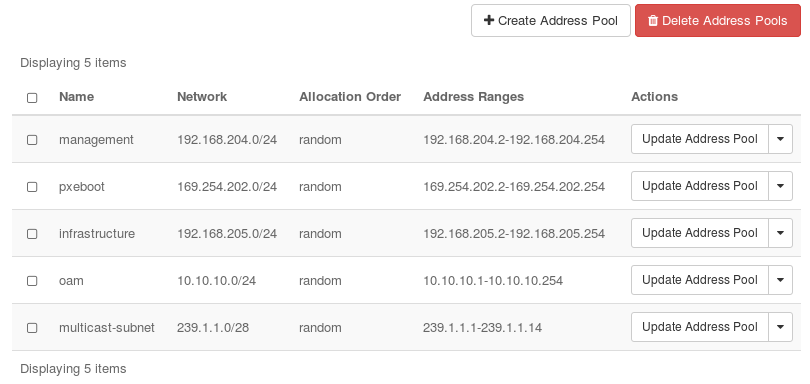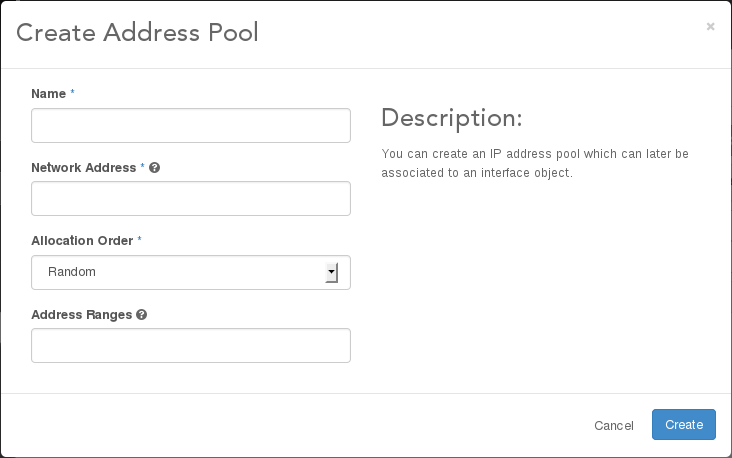Use IP Address Pools for Data Interfaces¶
You can create pools of IP addresses for use with data interfaces.
About this task
As an alternative to manually adding static IP addresses to data interfaces for use with VXLANs, you can define pools of IP addresses and associate them with one or more data interfaces. Each pool consists of one or more contiguous ranges of IPv4 or IPv6 addresses. When a data interface is associated with a pool, its IP address is allocated from the pool. The allocation may be either random or sequential, depending on the settings for the pool.
You can use the OpenStack Horizon or the CLI to create and manage address pools. For information about using the CLI, see Managing IP Address Pools Using the CLI.
Prerequisites
To make interface changes, you must lock the compute node first.
Procedure
Lock the compute node.
In the StarlingX OpenStack Web administration interface, open the System Configuration page.
The System Configuration page is available from Admin > Platform > System Configuration in the left-hand pane.
Select the Address Pools tab.

You can use the controls on the Address Pools page to create, update, or delete address pools.
To create an address pool, click Create Address Pool and complete the dialog box.

- Name
A name used for selecting the pool during data interface setup.
- Network Address
The subnet for the range (for example, 192.168.1.0/24).
- Allocation Order
The order for assigning addresses. You can select Sequential or Random from the drop-down list.
- Address Range
One or more ranges, where the start and end IP address of each range is separated by a dash, and the ranges are separated by commas (for example, 192.168.1.10-192.168.1.20, 192.168.1.35-192.168.1.45). If no range is specified, the full range is used.
Postrequisites
You can select an address pool by name when setting up the IPv4 Addressing Mode or IPv6 Addressing Mode for a data interface.
